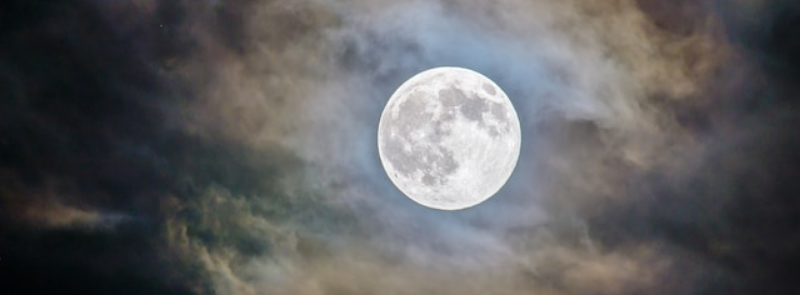
When It Occurs
Every July 20th
Timeline
Days Passed (816)
# Hashtags
#NationalMoonDay #Apollo11MoonLanding
July 20th marks a significant moment in history—National Moon Day—a tribute to the monumental event when humanity took its first steps on the lunar surface in 1969. This date commemorates NASA's awe-inspiring moon landing, hailed as "...the single greatest technological achievement of all time.".
Purpose: National Moon Day commemorates the historic Apollo 11 moon landing on July 20, 1969. It celebrates humanity's achievements in space exploration, honors the astronauts who made the journey, and encourages interest in space science and exploration.
History:
- Apollo 11 Mission: On July 20, 1969, NASA’s Apollo 11 mission successfully landed the first humans on the Moon. Astronauts Neil Armstrong and Edwin "Buzz" Aldrin walked on the lunar surface while Michael Collins orbited above in the command module.
- Neil Armstrong: As commander of Apollo 11, Neil Armstrong became the first person to step onto the Moon, famously stating, "That's one small step for [a] man, one giant leap for mankind."
- Buzz Aldrin: Following Armstrong, Buzz Aldrin joined him on the lunar surface, spending approximately two hours exploring, conducting experiments, and collecting samples.
- Michael Collins: Collins piloted the command module Columbia in lunar orbit, ensuring the safe return of his fellow astronauts to Earth.
- Legacy: The moon landing is considered one of humanity's greatest achievements and a significant milestone in space exploration.
Significance:
- Human Achievement: National Moon Day celebrates the monumental achievement of landing humans on the Moon and returning them safely to Earth.
- Inspiration: The day inspires interest in space exploration, science, and technology, encouraging new generations to pursue careers in these fields.
- Unity: The moon landing is a symbol of human potential and cooperation, showing what can be achieved through collective effort and determination.
- Commemoration: It honors the astronauts, scientists, engineers, and all who contributed to the success of Apollo 11 and subsequent space missions.
Activities:
- Watching Footage: Watch documentaries, films, or original footage of the Apollo 11 mission. "For All Mankind" and "Apollo 11" are popular choices.
- Stargazing: Spend the evening stargazing and observing the Moon. Use telescopes or binoculars for a closer look at lunar features.
- Visiting Museums: Visit science museums or space centers that feature exhibits on the Apollo missions and space exploration.
- Educational Programs: Participate in or organize educational programs, lectures, and discussions about the history and future of space exploration.
- Moon-Themed Crafts: Engage in moon-themed crafts and activities, such as making models of the lunar module or creating moon surface art.
- Reading and Learning: Read books or articles about the Apollo missions, the astronauts, and the science of the Moon. "First Man" by James R. Hansen and "Moon Shot" by Alan Shepard are excellent reads.
- Social Media: Share your knowledge, memories, or celebrations of National Moon Day on social media using the hashtag #NationalMoonDay.
Interesting Facts About the Apollo 11 Mission:
- Moon Landing Site: Apollo 11 landed in the Sea of Tranquility, a flat and relatively smooth area on the Moon's surface.
- Lunar Module: The lunar module, named Eagle, carried Armstrong and Aldrin to the Moon’s surface. Its descent stage remains on the Moon.
- Moonwalk: Armstrong and Aldrin spent about 21 hours on the lunar surface, including approximately 2.5 hours walking on the Moon.
- Experiments: They set up scientific experiments, including a seismometer to detect moonquakes and a retroreflector array for measuring the distance between the Earth and the Moon.
- Samples: The astronauts collected 47.5 pounds (21.5 kg) of lunar material to bring back to Earth for analysis.
- Return to Earth: The command module Columbia splashed down in the Pacific Ocean on July 24, 1969, and the crew was safely recovered.
Future of Space Exploration:
- Artemis Program: NASA's Artemis program aims to return humans to the Moon by 2024, with the goal of establishing a sustainable presence and preparing for future missions to Mars.
- International Collaboration: Countries and private companies are increasingly collaborating on space missions, including lunar exploration and potential Mars missions.
- Technological Advancements: Advances in technology continue to improve our ability to explore space, including more efficient rockets, sophisticated robotics, and enhanced scientific instruments.
How to Celebrate:
- Host a Moon-Themed Event: Organize a moon-themed party or gathering, complete with space-themed decorations, food, and activities.
- Build Models: Construct models of the Apollo 11 spacecraft or the lunar surface using kits or homemade materials.
- Moon Trivia: Play moon trivia games with friends and family to test your knowledge about the Moon and space exploration.
- Astronomy Clubs: Join or attend events hosted by local astronomy clubs to learn more about the Moon and space.
- Moon Walk Reenactment: For fun, recreate the iconic moonwalk in your backyard or a local park.
National Moon Day is an opportunity to reflect on one of humanity’s most remarkable achievements, inspire curiosity about space, and look forward to the future of space exploration. Whether through educational activities, stargazing, or celebrating with friends, there are many ways to honor this historic event and its enduring legacy.


